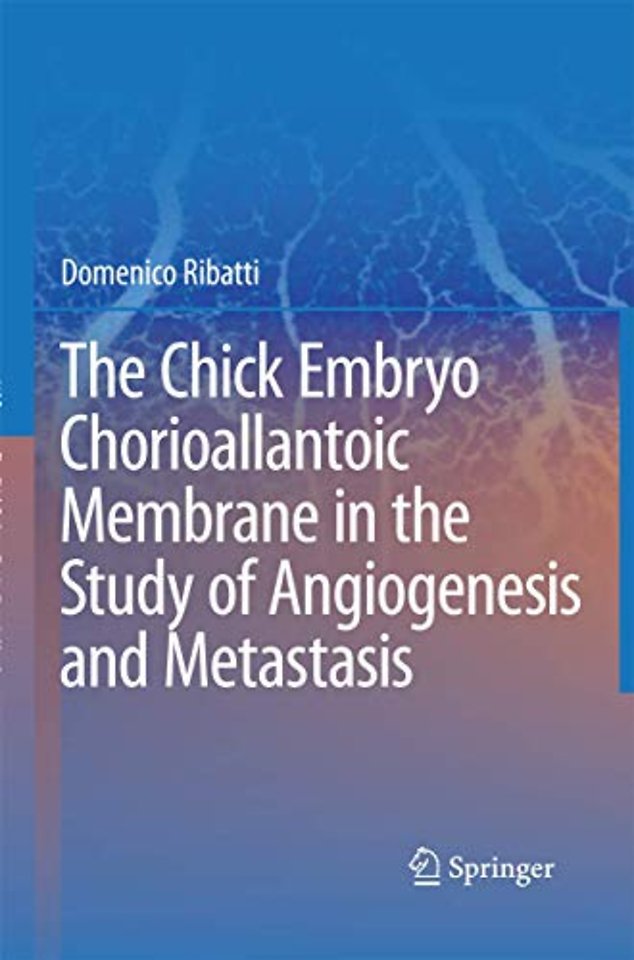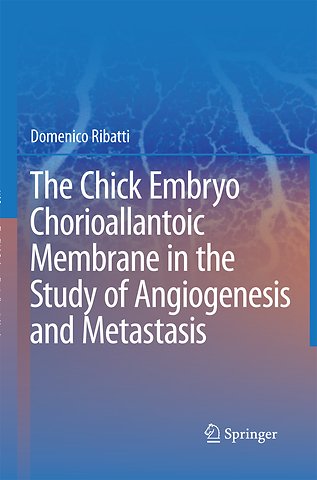The Chick Embryo Chorioallantoic Membrane in the Study of Angiogenesis and Metastasis
The CAM assay in the study of angiogenesis and metastasis
Samenvatting
As pointed out by Auerbach in 1991 “Perhaps the most consistent limitation to progress in angiogenesis research has been the availability of simple, reliable, reproducible, quantitative assays of the angiogenesis response.” In vitro angiogenesis assays, based on endothelial cell cultures or tissue explant, focus on isolated endothelial cell functions (e.g., endothelial cell proliferation, migration, or invasion) and do not examine the coordination of cell functions required for a successful angiogenic response (Jain et al., 1997; Auerbach et al., 2000). Although in vitro angiogenesis assays have been useful for identi cation of potential molecular targets to block endothelial cell responses and preliminary screening of novel pharmacological agents, they frequently cannot be correlated with in vivo angiogenesis measurements. This is most likely the result of the c- plex and multiple cellular mechanism evoked during new blood vessel formation in vivo. In vitro assays cannot be considered conclusive and the activity of a compound must be con rmed in other assays of increasing complexity, including in vivo assays of angiogenesis, angiogenic-dependent tumor growth, and metastasis.
Specificaties
Inhoudsopgave
2.1. Morphology of chorioallantoic membrane blood and lymphatic vessels
2.2. A single blood sinus or a capillary plexus beneath the chorionic epithelium?
2.3. The chorioallantoic membrane vascular growth 3. Use of chorioallantoic membrane in the study of angiogenic molecules
3.1. Role of FGF-2 in chorioallantoic membrane vascularization 4. Use of chorioallantoic membrane in the study of antiangiogenic molecules 5. Use of chorioallantoic membranes in the study of tumor angiogenesis
5.1. Angiogenesis and antiangiogenesis in multiple myeloma
5.2. Angiogenesis and antiangiogenesis in human neuroblastoma 6. Use of chorioallantoic membrane in the study of tumor metastasis
6.1. Spontaneous metastasis models.
6.2. Experimental metastasis studies. 7. Other applications
7.1. In ovo and ex ovo methods
7.2. Use of chorioallantoic membrane in the study of tumor lymphangiogenesis 8. Different morphological techniques that can be used to study vascularization of the CAM and the genes involved. 9. Methods of quantifying the angiogenic response 10. Limitations of the chorioallantoic membrane assay 11. Other classical in vivo assays in comparison (advantages, disadvantages and limitations) with the chorioallantoic membrane 12. Concluding remarks Acknowledgments References
Net verschenen
Rubrieken
- aanbestedingsrecht
- aansprakelijkheids- en verzekeringsrecht
- accountancy
- algemeen juridisch
- arbeidsrecht
- bank- en effectenrecht
- bestuursrecht
- bouwrecht
- burgerlijk recht en procesrecht
- europees-internationaal recht
- fiscaal recht
- gezondheidsrecht
- insolventierecht
- intellectuele eigendom en ict-recht
- management
- mens en maatschappij
- milieu- en omgevingsrecht
- notarieel recht
- ondernemingsrecht
- pensioenrecht
- personen- en familierecht
- sociale zekerheidsrecht
- staatsrecht
- strafrecht en criminologie
- vastgoed- en huurrecht
- vreemdelingenrecht

